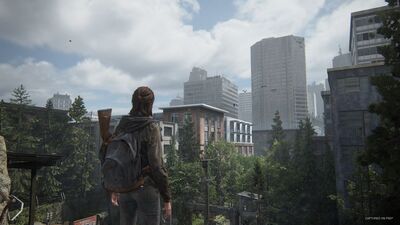One of the best games of the 2020s so far has been given a technical polish, including native 4K performance, framerate improvements, and Variable Refresh Rate. There have been noticeable graphical upgrades, particularly in depth of field and background detail. From the beginning of the game, as Joel and Tommy ride their horses over a ridge, I had the striking sense that the world around me was richer (and I just replayed the original version of the game last summer). It’s not SO drastic that it feels as much like a different game as last year’s “The Last of Us, Part 1,” which was a total rebuild, but it’s also not nothing. I wouldn’t suggest picking this up just for the graphical upgrade, but you will notice it if you do.

The new version of “The Last of Us” also boasts new DualSense wireless controller support, making some of the weapons feel different—chunkier for heavier trigger pulls, for example—which adds a new level of realism to the combat. It’s not listed as an upgrade, but it also feels like the sound design has been tweaked, making it a bit richer as a sensory experience, but that could just be in my head.
As for the aforementioned supplemental material, it really falls into three categories—four if you count the ability to add new skins to Ellie, Abby, and their weapons in the game itself after you complete it. (You can now fight zombies with an Ellie dressed like an astronaut!) The big draw will probably be the Lost Levels, three levels from the game that were cut from the final version. Sort of deleted scenes, they’re all incomplete, to varying degrees, and they come with commentary about how they would have fit into the game along with introductions from Neil Druckmann himself. Before you get all excited about missing “TLOU” action, slow down. There’s not much to these levels, but they are fascinating in terms of the storytelling process that goes into a game like this one.
The first lost level unfolds in Jackson at a party that would lead up to the memory of the first time that Ellie and Dina kissed. It would have come late in the game, as a flashback, and Druckmann is correct when he says it would have killed the building momentum of the end game of “Part II.” However, it’s fun to see how the developers envisioned life in Jackson, complete with carnival games around the dance and local flavor. The second scene takes place in the sewers after Ellie goes out the window and into the rushing river. Puzzle-heavy, it has one great potential beat when Ellie has crawl past a clicker, but I can see why this one was cut too. Finally, there’s a Boar hunt that also would have been a late-game flashback—while it enhances a sense of Ellie’s violent trauma, the game already has plenty of that.

